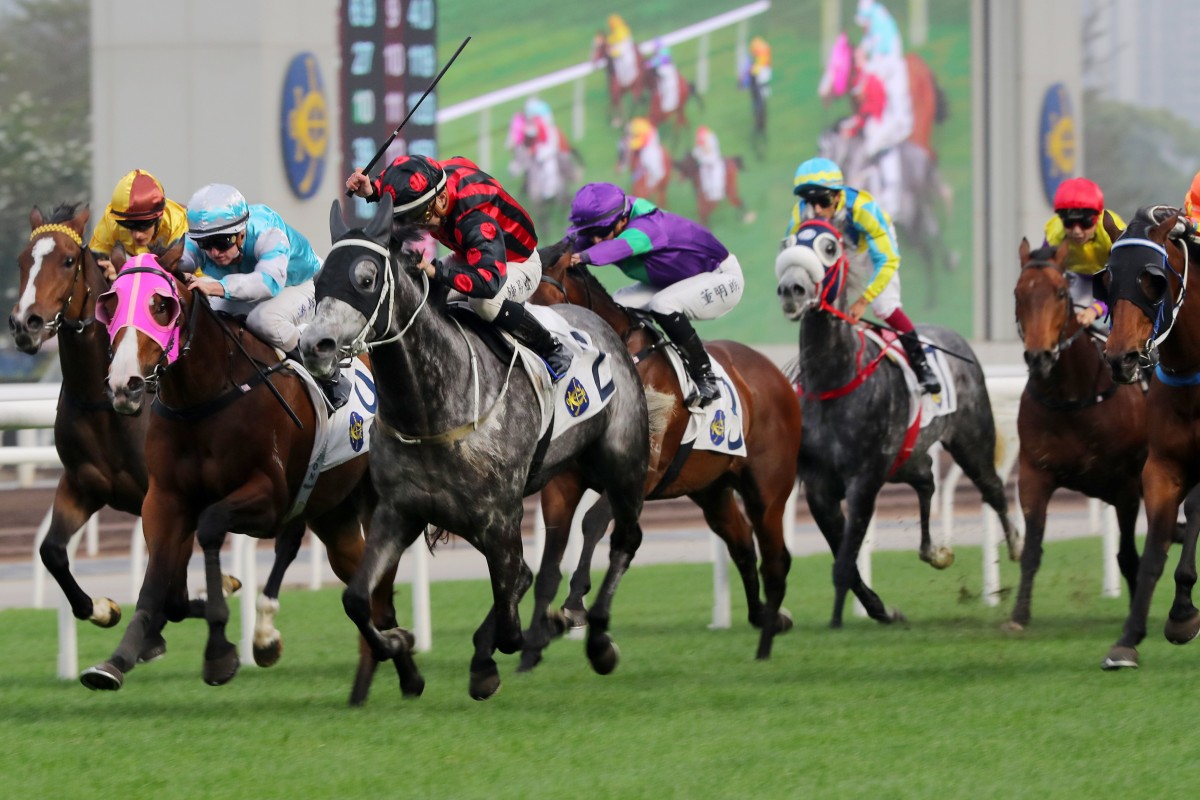Zac Purton has been hot on the condition of Hong Kong’s tracks throughout the season and the faster times at Sha Tin on Saturday certainly weren’t lost on some punters a little more than a week after the champion rider’s comments in a Jockey Club interview.
A remarkable 76.7 per cent (168 of 219) of Sha Tin turf races on a good surface this season have been run outside the Jockey Club’s standard times, while that figure jumps to an eye-watering 86 per cent (172 of 200) on tracks rated good at Happy Valley.
In comparison, 17 of the season’s 23 races run on good-to-firm tracks have been inside standard and it’s the drop in races run on the firmer side of good that is perhaps most telling – at the same time last season there had been 142 races run on good-to-firm tracks.
While chatting to Jockey Club presenter Tom Wood ahead of the Group One Queen’s Silver Jubilee Cup (1,400m) earlier this month, Purton lamented the change.

“To me they feel like they’re a lot wetter than they have been previously. They’re holding a lot more moisture, so whether there’s more water getting put on the track or whether it’s the weather we’ve had this season, I’m not sure,” he said.
“The tracks have certainly been softer. The horses have been getting into the tracks a little bit more and it’s creating a lot of biases as well. Sometimes you go to the races and you can’t make up ground, you’ve got to be forward, or you’ve got to be inside. [Sometimes] the inside is off so you’ve got to be outside.
“I always feel these tracks in Hong Kong race best when they’re bone dry and that’s reflective in the times as well. I know in some of the races we’ve lacked a little bit of speed and there hasn’t been as much pressure, but the overall times are outside standard all the time.
“It doesn’t matter how fast it feels like you’re going along in the race, they’re still outside standard. I think the tracks are just a little bit too soft at the moment.”
Shinn’s hit-and-run Galaxy Patch gallop ‘could be the difference’ in HK Derby
Saturday’s Sha Tin meeting bucked the trend of slow times, with four of the seven turf races inside standard- the first time more than half of a day’s races on a good turf surface have been inside standard since November.
“It certainly looked and felt drier and the times backed that up,” Purton said. “It’s just been the feel of the track. When you’re cantering to the gates you can see the moisture in it, you can feel it and you can hear it.
“That’s just the way it’s been for quite some time and it’s just frustrating because from a form point of view, when the track is wet you get a lot of random results.
“It also affects your opinion on how the horses are performing going forward, because if the track has been wet or it’s been biased and they’ve been disadvantaged by that, how do you actually measure their performance and how do you correlate all the form?”
He is a nice horse! 🌟
— HKJC Racing (@HKJC_Racing) March 16, 2024
Young Champion is all class again for the HKJC Racing Club, sealing a @KarisTeetan treble at Sha Tin... 🔥 #HKracing pic.twitter.com/o5aFrxvZGQ
Turnover has been down throughout the 2023-24 season and some have suggested the tracks have impacted punter confidence, but while the winning percentage of favourites so far this season (29 per cent) is down on last season (33 per cent), it’s relatively consistent with recent years.
Jockey Club chief executive Winfried Engelbrecht-Bresges pondered whether a less proactive approach by riders is contributing to the slower times, while head of race day operations, tracks and racing facilities Stephen Higgins confirmed the “penetrometer reading indicates a marginal easing of the racing surface, but in terms of scale the movement isn’t large”.
“Our watering policy has remained consistent for at least five years. We would expect faster times in the autumn, spring and summer and slower times through the middle of winter,” Higgins said, outlining that the penetrometer “readings only vary between 2.7 and 2.715 over the last six seasons on average”.
“These spread of times help identify the ‘standard’ time. The track is in full ‘winter grass mode’ which can lead to more penetration of the racing surface. The summer grass is very dormant.
Hewitson itching to make winning return from suspension ahead of HK Derby ride
“The winter grass was late to develop this year given the warm autumn and early winter so that is perhaps one reason race times have been slower from January, together with cloud cover and humidity.
“We obviously try and gauge this but watering has to be complete before midday at Happy Valley. We water a maximum of 10 minutes [5mm] prior to midday depending on the track condition following a 7am track inspection and review of weather. That is seven hours before the first race.
“Race-day watering is often for safety purposes at Happy Valley, especially to ensure enough moisture and therefore grip around the tight bends. The inside rail moves for every meeting so its hard to concur with the opinion that the inside rail has either an advantage or disadvantage, given it moves out four metres per meeting.”



















